Summer viewing: all the rest
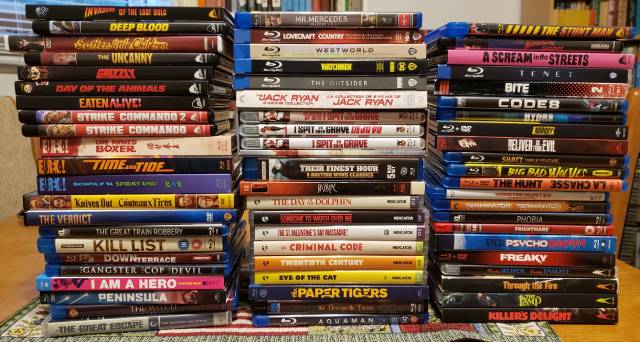
Viewing habits evolve over time. Some of this is just a natural evolution; you grow older, tastes change. Some of it is due to external factors. When I was younger, seeing movies meant going to theatres or watching them on television – mutilated, dismembered for commercials – and I would take whatever came along. And the variety was extensive. Back in the ’70s, for some reason Winnipeg was a major centre for exhibition. We got almost everything that was released – major studio productions, cheap exploitation, foreign movies with subtitles. I took it all in, while also catching up on a lot of film history on TV.
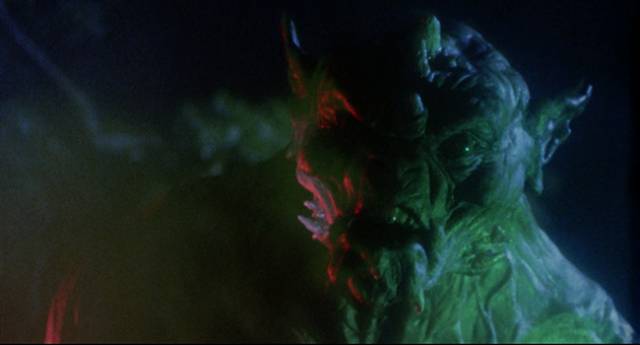
As theatres underwent major (and ultimately detrimental) changes in the ’80s – a lot of closures and consolidation, multiplexing – that variety narrowed. The production industry’s turn towards blockbusters was amplified by exhibitors’ discovery that they could make more money showing a few big movies than they could with a greater number of smaller films. Parallel with this trend was the emergence of home video. Initially quite expensive, this became the cheaper, and to some degree preferred, way of movie-watching for a lot of people.
I’ve always been a late adopter, so I didn’t really get into home video until the mid-’90s. By then, my theatre-going had declined noticeably, though my involvement with the Winnipeg Film Group, working closely with the late great Dave Barber at the WFG Cinematheque, ensured a steady diet of independent and foreign movies. Then in the late ’90s I began to transition from VHS to Laserdisc (just a few years shy of that format’s abrupt demise around the turn of the millennium) – I still have boxes of them in my storage room, though my player died fifteen or more years ago. As usual I was a bit slow taking up their replacement, buying my first DVD player in 2001.
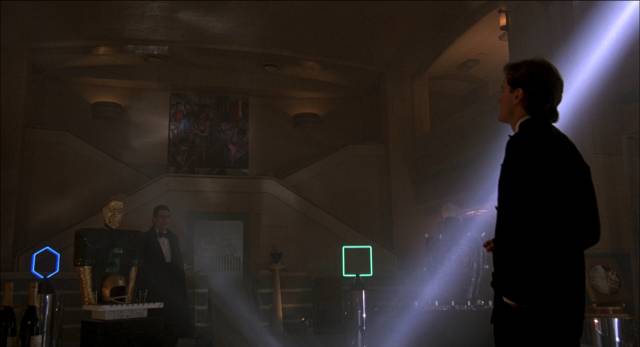
That was a fateful decision and I occasionally wonder what life would have been like in the past two decades if I hadn’t done it. I’d probably have a lot more money in the bank today. (I just calculated that over those two decades I’ve spent an average of about $9300 each year on DVDs, and later Blu-rays, which must count as some kind of psychological problem!) In those early years, when my spending was at its highest, my purchases were almost all in-store; we had a lot of places back then which specialized in physical media and I would browse for hours and walk out with bags full of disks. That was also a time when the Internet was still fairly novel and specialty websites offered interesting items from all over the world. Using eBay could provide a brief thrill as auctions would go down to the final seconds with people trying to outsmart each other as they vied for desirable items. I managed to get in the winning bid on a copy of the Lucertola DVD of Mario Bava’s Rabid Dogs in literally the final second before the auction closed. Even now, it remains one of the single most expensive disks in my collection! (I’ve kept it as a collector’s item even though it has been far surpassed in quality by Arrow’s excellent Blu-ray – necessarily compromised because Bava’s son Lamberto and sometime producer Alfredo Leone wrecked the original negative when they put together their bastardized version, Kidnapped. As the DVD was the first reconstruction of the uncompleted film, there are also some differences which make it valuable as an alternate cut.)
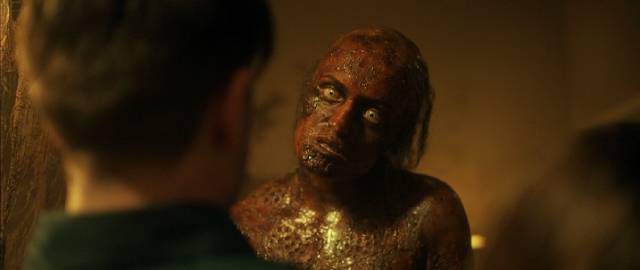
The advent of DVDs unleashed a huge flood of releases by major companies rapidly transferring their holdings to disk; vast swathes of film history were suddenly made available, with companies like Warner Brothers and Fox putting out themed box sets with commentaries and featurettes providing context for a group of movies connected by genre or director or stars. For a while, these companies were giving focus to something which had previously been haphazard; not having gone to film school, I had gained what knowledge of film history I possessed from reading books and articles and watching movies on television or in small repertory theatres. Now I could study more intensely in my own apartment. The first few years of DVD collecting were the most expensive as I vacuumed up huge volumes of material (that’s when I spent anywhere from $17,000 to $19,000 a year).
But then things began to slow down, with companies cutting back. I guess there were a lot of people like me who poured money into DVD-buying in those early years, but then became more judicious and selective. After massive initial profits, things levelled off and people already began to talk of the death of physical media. More stuff started to show up on-line and the major companies saw a financial advantage in streaming – they could charge customers a fee without the expense of manufacturing and distributing disks. It would be more profitable for them to switch over and quite quickly production of elaborate editions tapered off. Warners, Fox, MGM and a few other companies did prop up the medium in the interim with burn-on-demand disks, but they stopped production on most of the extras which had made earlier releases so attractive; they also frequently stopped making newer transfers, with many of those on-demand releases based on older, less technically robust masters made for television or even VHS.
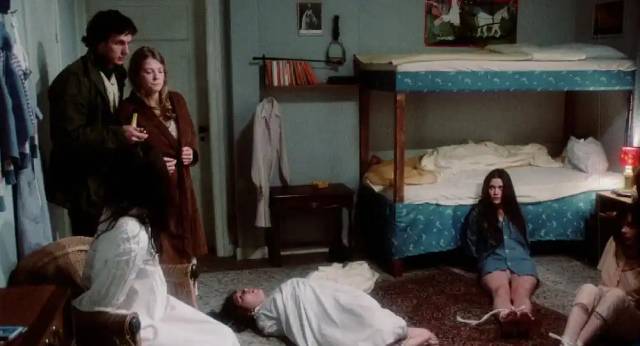
Stubbornly, fans of physical media refused to concede defeat and smaller companies sprang up, licensing movies from the big companies. While the majors still released newer movies on disk, a practice which gained a big boost with the advent of Blu-ray, smaller and older movies were turned over to independent companies which aimed their releases at collectors. These companies were initially at the mercy of the licensors, having to take whatever masters were provided, while enhancing their releases with commentaries and documentaries and other extras. I was hooked early on Anchor Bay’s special editions, then companies like Blue Underground appeared, with Criterion always there to provide higher-end cinema.
These days, if you’re looking for anything beyond new mainstream releases, you have to turn to what were originally termed boutique companies – the name doesn’t really fit many of them now because they’ve grown in scale. While I got hooked on Arrow and Criterion and the BFI years ago, in the past decade or so I’ve been addicted to Twilight Time (which almost disappeared with the death of founder Nick Redman), Severin, Vinegar Syndrome, Shout! Factory, Eureka/Masters of Cinema, Artificial Eye and Indicator, with occasional side trips to Ronin Flix, Second Sight and other smaller companies.
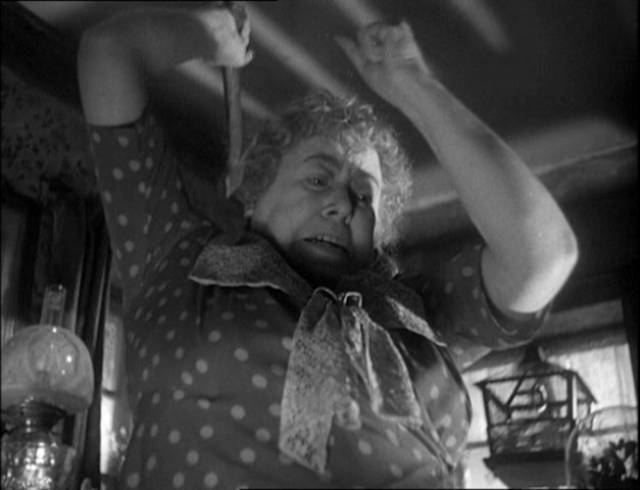
One effect of this constantly shifting landscape is that my viewing has increasingly become shaped by the choices these different companies make about what to release. In effect, what was once a rather amorphous experience ranging freely over the plains of film history is now to some degree curated. What I watch is guided strongly by these companies’ release schedules. Where once I would browse the racks of different stores, picking up titles which caught my eye for one reason or another, now every month I order groups of movies which have been chosen by someone else. And I’m not entirely sure how I feel about that.
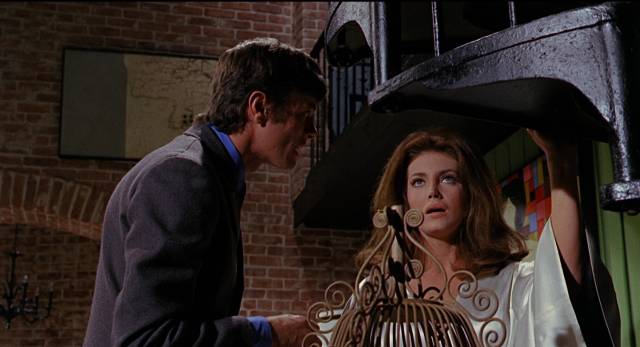
When I receive a package from Severin or Vinegar Syndrome, I’ll work my way through these releases while other disks languish in the various piles which have never stopped growing on my shelves. (We have one store in Winnipeg which has a pretty good selection of new and older titles, and I’m afraid I still resort to Amazon quite frequently, though I more often order from sellers than from the Great Capitalist Satan directly.) I’ll watch half a dozen low-budget genre movies while remaining conscious that my new Kino Lorber 4K restoration of Alain Resnais’ Last Year at Marienbad is sitting there in full view on the coffee table. I really want to watch that … but I have yet another regional horror from Vinegar Syndrome to get to first, not to mention Severin’s three August releases containing five features by Eloy De La Iglesia, a Basque filmmaker I’d never heard of before. I have to admit that I’m an undisciplined mess.
For what it’s worth, in addition to everything I’ve written about for the past three months or so, here’s a list everything else I’ve watched during that period. Why didn’t I write about any of these instead of those I did review? Mostly lack of time, and a tendency to write about what I watched most recently, which means anything from earlier in the week has already been supplanted by something else when I sit down at the computer on the weekend.
*
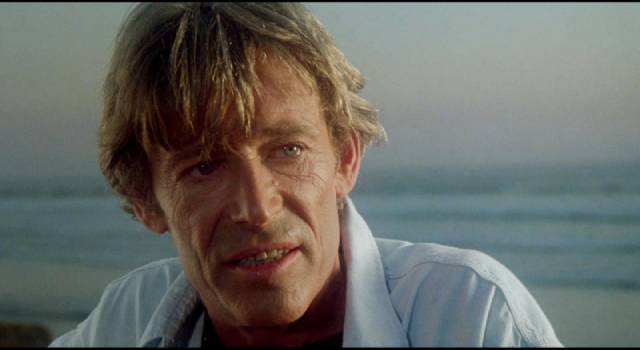
Severin Films
The Stunt Man (Richard Rush, 1979) A favourite since my first exhilarating encounter in a theatre in 1979; one of the greatest expressions of love for cinema. • A Scream in the Streets (Carl Monson, 1972) Sleazy exploitation framing a series of fairly explicit, and mostly rough, sex scenes with a couple of cops investigating a cross-dressing serial rapist-murderer in Los Angeles. • Invaders of the Lost Gold (Alan Birkinshaw, 1982) A clumsy jungle adventure with a surprisingly respectable cast heading to the Philippines in search of a stash if Japanese gold from WW2; naturally, a lot of betrayals and mutual backstabbing ensue. • Deep Blood (Joe D’Amato, 1990) A belated Italian Jaws-wannabe with poorly-acted scenes intermittently interrupted by stock shark footage and perfunctory attack scenes. • The Uncanny (Denis Heroux, 1977) Switching cats for sharks, this Canadian effort has Peter Cushing trying to warn the world in three separate stories about a sinister feline conspiracy to do away with the human race. • Grizzly (William Girdler, 1976) Switching a big, mean bear for sharks, Girdler’s breakthrough was dubbed “Jaws with Claws”; characters on the trail of the killer bear blatantly replicate the trio in Spielberg’s movie, but this is good, entertaining pulp. • Day of the Animals (William Girdler, 1976) On the heels of Grizzly, Girdler upped the ante with all of nature turning on humanity; despite budget limitations, the movie builds an effective atmosphere of apocalyptic doom. • Eaten Alive (Umberto Lenzi, 1980) One of the most generic Italian cannibal movies, this combines flesh-eating natives with a Jim Jones-style death cult led by an ideally cast Ivan Rassimov.
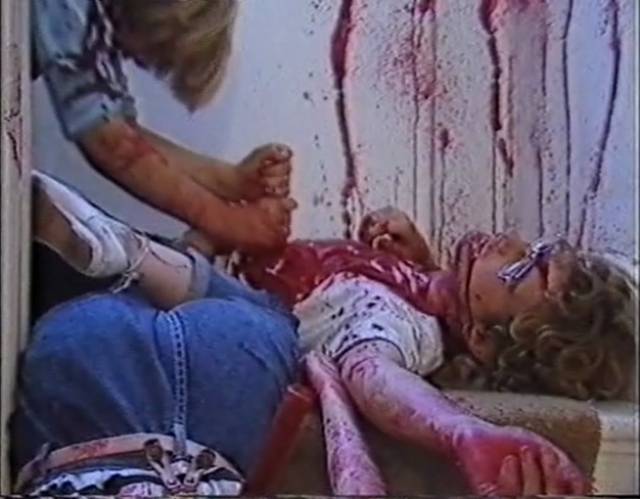
Strike Commando & Strike Commando 2 (Bruno Mattei, 1986/1988) Schlockmeister Mattei plunges enthusiastically into Rambo territory with a pair of action movies involving betrayal by commanding officers and prisoners-of-war left behind; the big surprise is seeing Richard Harris turn up in the sequel. • Suffer, Little Children (Alan Briggs, 1983) An amazing, incredibly cheap, shot-on-VHS horror made by the teachers and students of a British children’s drama school; amateurish yet enthusiastic, this evil kid movie has a remarkably bloody third act, which leaves you wondering how the kids’ parents felt about it all. • Siege (Paul Donovan & Maura O’Connell, 1982) A tense Canadian thriller in which a neo-fascist gang, having slaughtered the occupants of a gay club, pursue the lone survivor to a tenement occupied by leftists who have well-developed fighting skills, resulting in a lot of bloody death. • Born For Hell (Denis Heroux, 1975) Before warning us about cats, Heroux made this bleak slice of horror realism, relocating Richard Speck’s murder of a group of nursing students from Chicago to British-occupied Belfast; maintaining a low-key air of documentary detachment, the film is reminiscent of Ian Merrick’s The Black Panther. • Skinned Deep (Gabriel Bartalos, 2003) In his first feature, Gabe Bartalos seems to be channelling Tobe Hooper’s Texas Chainsaw Massacre 2 in both design and tone, as various characters run afoul of a cannibal family who waylay travellers on a highway running past their compound. • I’ve also dipped into but not finished Severin’s Andy Milligan, Al Adamson and Christopher Lee box sets, which I should get around to commenting on at some point.
*
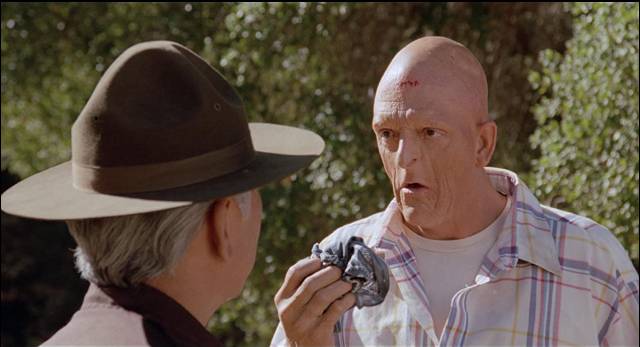
Vinegar Syndrome
Through the Fire (Gary Marcum, 1988) Of interest mainly as an example of low-budget regional filmmaking, this talky effort involves a woman investigating the disappearance of her sister which turns out to involve a dull group of Satanists in Texas. • The Lamp (Tom Daley, 1987) A more effective Texas-made horror, this features a group of high-schoolers sneaking into a museum for some overnight fun, only to encounter an ancient, malevolent genie which one of them releases from an antique lamp; a more polished production with some nifty special effects. • Killer’s Delight (Jeremy Hoenak, 1978) More serial-killer movie than slasher, this follows a pair of cops as they try to put an end to the grim spree of a guy in a white van who increasingly taunts them by leaving blatant clues; the killer is played by John Karlen, far from the elegance of Harry Kumel’s Daughters of Darkness. • Murder Weapon & Deadly Embrace (David DeCoteau, 1989) Prolific and hacky DeCoteau throws together a pair of “erotic thrillers”; not much in the way of plot, but DeCoteau enthusiastically piles on madness, sex and violence. • Auntie Lee’s Meat Pies (Joseph F. Robertson, 1992) Neither as funny nor as frightening as it aims to be, this horror-comedy about a woman and her “nieces” luring men to their doom as pie-filling has its moments, mostly provided by the great Michael Berryman in one of his most eccentric performances. • Girls School Screamers (John P. Finegan, 1984) A group of girls from a Catholic school are tasked with cataloguing the contents of a mansion recently left to the school; unfortunately for them, it’s haunted by malevolent ghosts who aim to kill them off in an attempt to liven up a talky script.
*
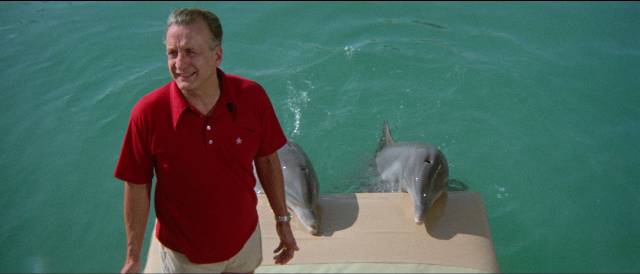
Indicator
The Day of the Dolphin (Mike Nichols, 1973) Mike Nichols disowned this movie, which he made to fulfill a contract, but I love it; a bleak meditation on human disconnection from the rest of the natural world, it avoids all cuteness and sentimentality despite being about talking dolphins. • Someone to Watch Over Me (Ridley Scott, 1987) Wanting to escape big-budget FX movies, Scott followed Blade Runner and Legend with a contemporary story about a working-class cop who risks his happy family life by having an affair with a wealthy murder witness he’s assigned to protect; and then Scott over-produced it to a ridiculous degree. • Jagged Edge (Richard Marquand, 1985) Like Scott’s movie, this Joe Eszterhas-scripted erotic thriller hinges on an implausible relationship, this time with a very smart woman lawyer jumping into bed with her way-too-smooth client who not surprisingly really did brutally murder his wife for her money. • The St. Valentine’s Day Massacre (Roger Corman, 1967) Corman’s only big-studio feature is a well-made, documentary-style account of Al Capone’s slaughter of a rival gang; an excellent cast of familiar character actors and authentic period atmosphere. • The Criminal Code (Howard Hawks, 1930) Hawks’s early sound feature is a tough depiction of what prison does to an essentially decent young man. • 20th Century (Howard Hawks, 1934) Hawks turns the screwball comedy on its head by making the romantic couple both unlikable, relentlessly selfish egotists; John Barrymore and Carole Lombard engage in fierce emotional combat, their weapon savage wit. • Eye of the Cat (David Lowell Rich, 1969) An absurd family melodrama about two brothers and their wealthy invalid aunt hinges on the elder brother’s fear of cats, which is a problem because Auntie has a houseful of them; glossy and overwrought, it was written by Joseph Stefano, who had scripted Hitchcock’s Psycho. • Corruption (Robert Hartford-Davis, 1968) Sleazy and perverse, this English riff on Eyes Without a Face is a ripe slice of exploitation most notable for the startling sight of the elegant and dignified Peter Cushing wrestling with a bare-breasted woman before stabbing her to death and cutting off her head.
*
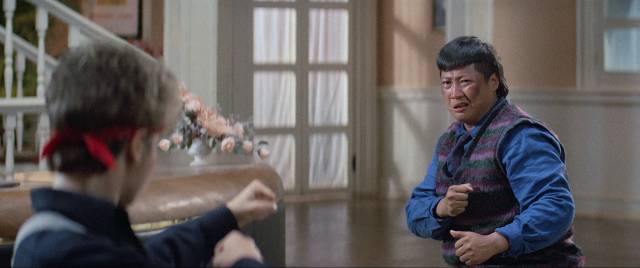
Eureka
One Armed Boxer (Jimmy Wang Yu, 1971) After a gang cuts off his arm, a martial arts master learns new techniques and takes on a wide range of bad guys who belong to various different traditions; packed with inventive action, this was hugely influential in the ’70s explosion of Hong Kong martial arts movies. • Encounter of the Spooky Kind (Sammo Hung, 1980) Before producing the hit Mr. Vampire, Hung invented the comedy-folk horror-martial arts genre with this story of a man attacked by a sorcerer hired by his wife and her lover; Sammo uses his distinctive fight choreography to combat zombies, vampires and other supernatural threats. • The Millionaires’ Express (Sammo Hung, 1986) Hung effortlessly mounts an action epic in which numerous competing factions gather in a remote town, their conflicting interests leading to a series of spectacular large-scale fights; Sammo adapts the tropes of the spaghetti western to the martial arts movie, with the opening stretch shot in deep snow in the Canadian Rockies. • Time and Tide (Tsui Hark, 2000) After a brief foray in Hollywood directing Jean-Claude Van Damme movies, Tsui Hark returned to Hong Kong, channelling John Woo (two friends put at odds by circumstance) and Wong Kar-Wei (a fragmented, kaleidoscopic narrative reflecting heightened emotions and a disintegrating post-modern social context) into this ode to kinetic action.
*
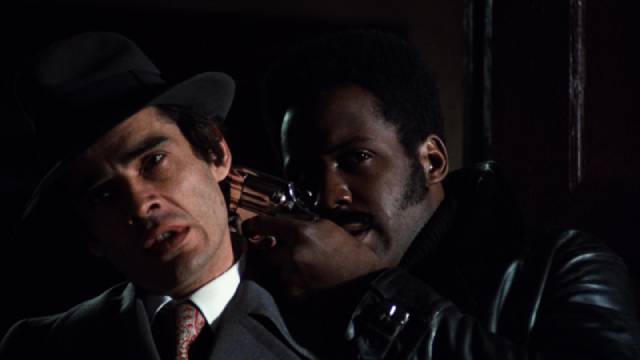
Warner Brothers
The Verdict (Don Siegel, 1946) Siegel began his directing career with this atypical period mystery, the last pairing of Sydney Greenstreet and Peter Lorre, in which the former is a Scotland Yard inspector who sent the wrong man to the gallows and now does what he can to atone for his fatal mistake. • Shaft/Shaft’s Big Score/Shaft in Africa (Gordon Parks/John Guillermin, 1971-73) Gordon Parks’ original is an effectively gritty detective thriller embedded with racial tensions; the two follow-ups get progressively more problematic as commercial success locks in blaxploitation tropes. • Tenet (Christopher Nolan, 2020) Nolan’s penchant for over-produced, convoluted and tediously self-serious movies hits its pinnacle with this vague, ponderous thriller which hinges on some half-baked time travel concept that never comes into clear focus. • Aquaman (James Wan, 2018) Speaking of half-baked and over-produced, the usually reliable James Wan gets lost in this Marvel fantasy which smothers its superhero origin story with so much busy CGI that it seems more like an absurdly elaborate screensaver than a movie.
*
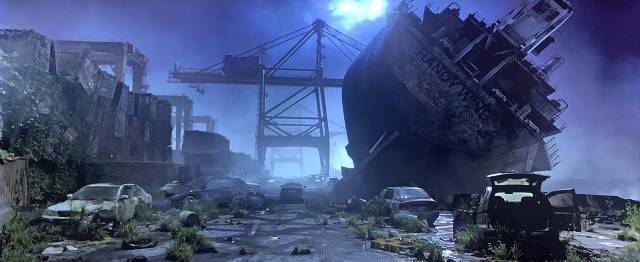
Well Go USA
Peninsula (Yeon Sang-ho, 2020) Sequels almost always fall short of originals because they inevitably lack the freshness of discovery, which is the case with this follow-up to the great Train to Busan in which a team sneaks into a zombie-infested city looking for a truck full of cash and have to fight their way back out; good design and well-staged action are somewhat mitigated by a sense of familiarity. • The Gangster, The Cop, The Devil (Lee Won-tae, 2019) A cop on the trail of a serial killer teams up with a gangster who may be the only one who can identify the killer; the uneasy alliance is made more necessary when the cop’s superiors refuse to buy his theory about the case and order him to stand down. • The Paper Tigers (Tran Quoc Bao, 2020) Three middle-aged men who as kids were the acolytes of a martial arts master have to join together and rediscover the philosophy they abandoned when their teacher is murdered by his more recent student. • Hydra (Kensuke Sonomura, 2019) The chef at a small sushi restaurant has a sideline as a hired killer; he wants to change his life but is drawn in for one final job in this mix of character piece and bloody violence. • Deliver Us from Evil (Hong Wan Chan, 2020) Another hit-man planning to retire gets dragged back in when the daughter of his former girlfriend is kidnapped; heading for Thailand to find her, he also has to deal with the murderous brother of his last target. • The Witch (Park Hoon-jung, 2018) A schoolgirl deals with teen angst as circumstances begin to raise memories of a secret, forgotten past, leading to a discovery of hidden abilities as she’s targeted by sinister forces.
*
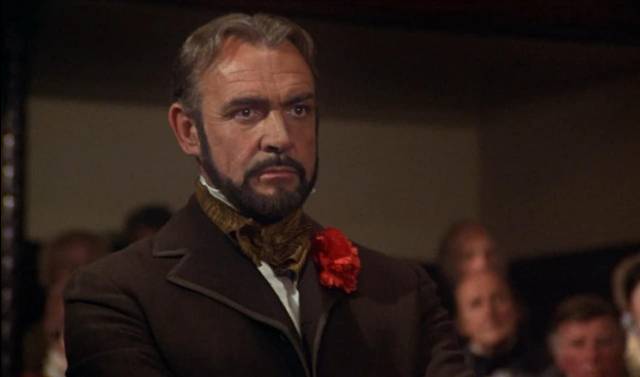
Kino Lorber
The Great Train Robbery (Michael Crichton, 1978) Crichton’s best film (from one of his best novels) is a rousing period heist story about a gang of resourceful mid-Victorian criminals who set out to rob a moving train; a colourful cast and great period atmosphere, with a skilful mix of suspense and comedy. • Phobia (John Huston, 1980) One of Huston’s few all-out misfires with a dubious therapist trying to cure his patients’ problems by exposing them to their worst fears, resulting in a series of deaths.
*

Box Sets
Jack Ryan Collection (Various, 1989-2014) Little consistency with changing directors and stars, but Tom Clancy’s thrillers are all entertaining in their own way, from Alec Baldwin’s analyst thrust into a sea chase in The Hunt for Red October, to Harrison Ford’s middle-aged agency bureaucrat facing IRA assassins and Central American drug cartels in Patriot Games and A Clear and Present Danger (the best of the series) and back to Ben Affleck’s young analyst facing nuclear apocalypse in The Sum of All Fears; the only dud is Chris Pine’s belated origin story in Jack Ryan: Shadow Recruit.
Rob Zombie Trilogy (Rob Zombie, 2002-2019) Zombie throws horror tropes into a blender in his trilogy about a murderous backwoods family who end up on the road leaving a trail of bloody mayhem; nasty and cynical, making the killers the heroes, the movies benefit from the distinctive presence of Sid Haig as clown-faced killer Captain Spaulding.
The Monster Collection (Gilles Penso & Alexandre Poncet, 2015-2019) A pair of documentaries about the history of special effects and the artists who create them have an air of melancholy as they evoke a sense of lost artistry with the inexorable transition from physical and optical FX to CGI; the set is loaded with extra material for which there was no room in the two features.
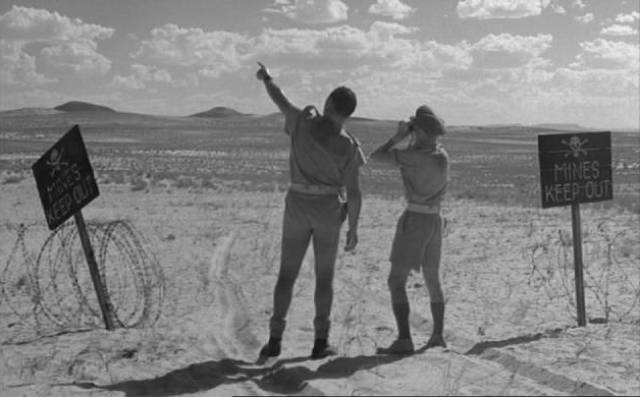
I Spit on Your Grave (Meir Zarchi, 1978-2018) Zarchi’s problematic and troubling rape-revenge movie remains the Citizen Kane of this disreputable genre; Ronin Flix’s set includes the extraneous sequel in which original victim Camille Keaton returns forty years later to encounter relatives of the men she killed after they raped her, plus a feature-length documentary by Zarchi’s son.
Their Finest Hour (Various, 1942-1958) Five British WW2 movies touch on the darker side of war often glossed over by Hollywood, reflecting the differences between those directly involved in the conflict and those who observed it from a distance. The Colditz Story is based on ingenious attempts to escape from a German prison located in a castle; The Dam Busters deals with the scientist who invented a new type of bomb for destroying dams to disrupt German war industries; Dunkirk, with far fewer resources than Christopher Nolan, recounts the massive evacuation from France without clever narrative tricks; Ice Cold in Alex is a tense adventure about an ambulance crossing the North African desert, trying to keep ahead of the Germans’ rapid advance; and Went the Day Well? is a startlingly tense and violent “what if?” story made in 1942 about a small village taken over by a German unit disguised as British soldiers in advance of an imminent invasion.
*
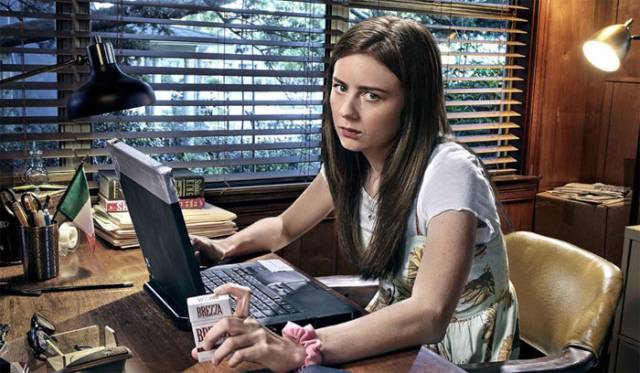
Television
Mr. Mercedes (Various, 2017-2019) Making the killer from the first novel in Stephen King’s trilogy the title character of this adaptation signals a shift of emphasis; the books’ focus on the developing personal and professional relationships among the characters becomes secondary, not to mention the narrative distortion of changing the sequence of the novels which seriously compromises the second, and best, of the three. The cast is very good, though, particularly Justine Lupe who nails the tricky character of Holly.
The Outsider (Various, 2020) Holly becomes a major element in this subsequent King story, but she’s radically changed; it’s not the racial switch (she’s played by Cynthia Erivo) so much as the change from her original fragility to a tougher, more confrontational conception. The story of a shape-shifting monster which preys on children is otherwise quite faithful to the book.
Watchmen (Various, 2020) Rather than adapting Alan Moore and Dave Gibbons’ seminal dissection of superhero mythology, this series works around the edges to create a new focus on race, with the first Watchman a Black man who, as a child, survived the Tulsa massacre and as an adult turns his anger outwards as a vigilante. Despite the departure from the source, this is a better version than Zack Snyder’s 2009 feature.
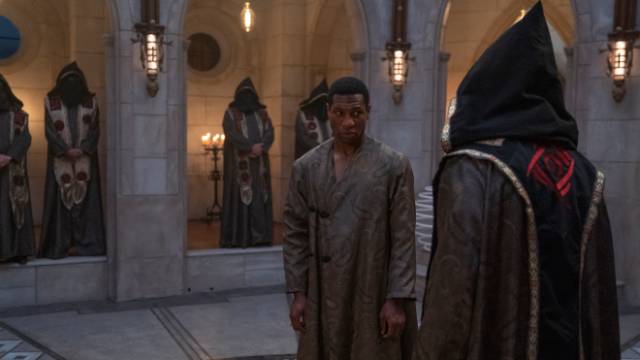
Lovecraft Country (Various, 2020) The Tulsa massacre also looms over this series, which confronts racism in the U.S. even more directly than Watchmen; searching for his missing father, a Black man from Chicago travels through America during the Jim Crow ’50s, where racists are even more threatening than the Lovecraftian monsters which occasionally break through from another dimension. The Necronomicon and jumps through time, including a trip back to Tulsa where a family connection to the massacre is revealed, complicate the narrative.
Westworld: Season Three (Various, 2020) I’m not sure why I keep going with this slick series, which long ago left behind Michael Crichton’s pulpy slice of techno-horror; weighed down by the overly tricky storytelling of Christopher Nolan’s brother Jonathan, it looks good and has a great cast, but more often than not ends up frustrating and irritating.
*
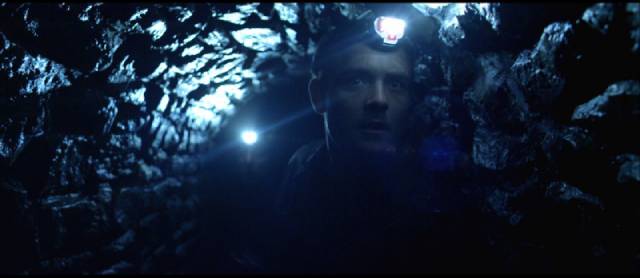
Miscellaneous
Down Terrace & Kill List (Ben Wheatley, 2009/2011) Wheatley’s first two features play with genre conventions in sometimes interesting ways; in the case of Down Terrace it’s violent criminals who live a suburban life full of petty irritations, while Kill List has a pair of hit-men whose latest contract leads them into dangerous occult territory. • I Am a Hero (Shinsuke Sato, 2015) I wanted to like this Japanese zombie horror-comedy more than I eventually did; a lowly, insecure manga artist gets an opportunity to act out his heroic fantasies when the zombie plague hits, but despite plenty of well-staged, gory action, the character never becomes particularly likeable so it’s difficult to feel invested in his struggles. • Code 8 (Jeff Chan, 2019) Low-budget Canadian variation on X-Men, with those born possessing various powers relegated to a heavily-policed underclass; one mutant, needing money to get his dying mother medical treatment, hires himself out to some criminals and finds himself in ever-deeper trouble. The working class angle is more interesting than X-Men’s band of privileged whiners. • Nobody (Ilya Naishuller, 2021) I generally enjoy movies where ordinary characters are pushed by circumstances into becoming resourceful action stars, so this started out well as a bored office drone stands up to thugs harassing a woman on a bus; but I lost interest when it was revealed that the guy is actually a former black ops ace with a certain set of skills…
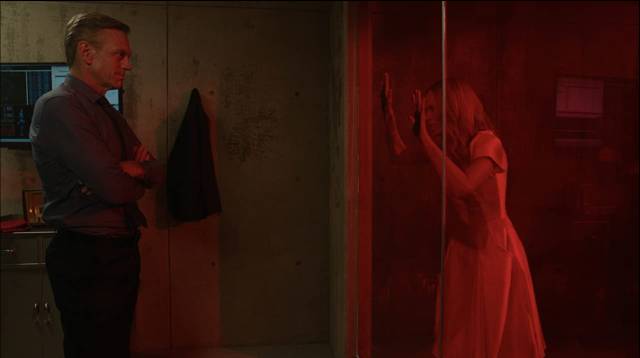
The Final Wish (Timothy Woodward Jr, 2019) When his father dies, a man returns home where he has to deal with his estranged mother’s anger and grief; this family trauma is complicated by an antique which seems to grant wishes, even unspoken ones, and as fairy tales always point out we should be careful what we wish for… • Rabid (The Soska Sisters, 2019) Although the Soska Sisters have visual flair, there’s not enough of a fresh perspective to warrant this remake of David Cronenberg’s early feature; it lacks the clarity of the original, not bothering to explain the mechanism of the protagonist’s mutation, and never generates Cronenberg’s apocalyptic dread. • Terror Express (Ferdinando Baldi, 1980) I didn’t like Baldi’s Get Mean, but I love movies set on trains, so I gave this a try; the set-up is okay, with three proto-Droogs tormenting passengers on an overnight express (Werner Pochath is very good as the leader), but it’s under-developed and never quite generates the tension it promises. • Big Bad Wolves (Aharon Kashales & Navot Papushado, 2013) Made the same year as Denis Villeneuve’s Prisoners, this Israeli film shares a lot of that dire movie’s elements; a child is murdered and her father kidnaps a man suspected of the crime and, with the help of a cop, tortures him hoping for a confession.
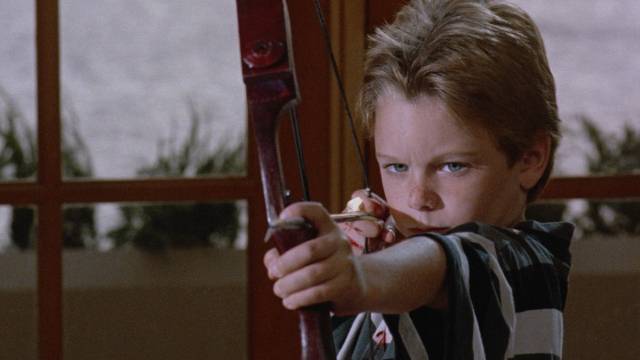
Frightmare (Norman Thaddeus Vane, 1983) A group of fans steal their horror star idol’s corpse to have a sick party, but he comes back from the dead to get revenge; a bit sloppy and ragged, its main appeal is Ferdy Mayne as the bad-tempered actor. • Bite (Chad Archibald, 2015) Unsure of her upcoming marriage, a young woman has a last fling with friends in Mexico where something in the water bites her; back home she begins to change and give birth to nasty parasites, which totally disrupts the wedding plans. • Mikey (Dennis Dimster-Denk, 1992) An unexpectedly effective “bad seed” story about a young sociopath who slaughters his family when he doesn’t get his way, then finds himself unhappy with his new adoptive parents; Family Ties’ Brian Bonsall, just ten, is chilling as the little monster. • The Devonsville Terror (Ulli Lommel, 1983) I tracked this down because of its connection with Bill Rebane (it was shot at his rural Wisconsin studio); very similar to Rebane’s The Demons of Ludlow, made around the same time, it’s a pretty generic take on a witch returning after three-hundred years to get revenge on the descendants of those who executed her.
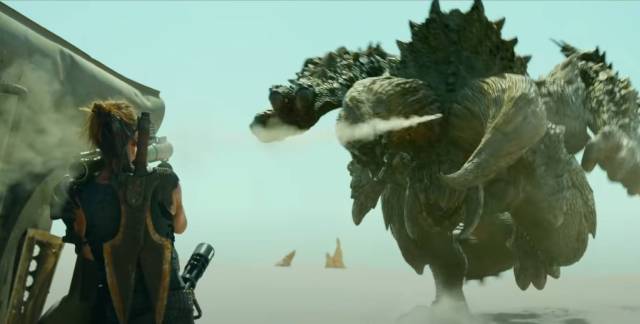
Monster Hunter (Paul W.S. Anderson, 2020) I like Paul W.S. Anderson and I like Milla Jovovich and this video game adaptation seems promising, but when at the end it becomes clear that it’s essentially a prologue setting up a potential series for which there’s no sign of future episodes, I felt cheated; soldiers in the Middle East are blasted into another dimension teeming with giant monsters. • Terminator: Dark Fate (Tim Miller, 2019) James Cameron’s original Terminator remains one of the greatest action movies ever made; the series which followed became increasingly bloated (starting with Cameron’s own sequel) and by Dark Fate has devolved into complete self-parody. • The Great Escape (John Sturges, 1963) The genre of taut, claustrophobic British prisoner-of-war movies was inflated into star-studded spectacle by Hollywood; naturally all those English character actors had to be overshadowed by star Steve McQueen, who’s his usual cool self and gets to do the big motorcycle stunt at the end. • Knives Out (Rian Johnson, 2019) An updated country house mystery with everyone gathering to hear the will of a successful writer who apparently committed suicide; plenty of family tensions, some issues of class and race, and an insouciant detective who pries the lid off everyone’s secrets make for an entertainingly old-fashioned puzzle.
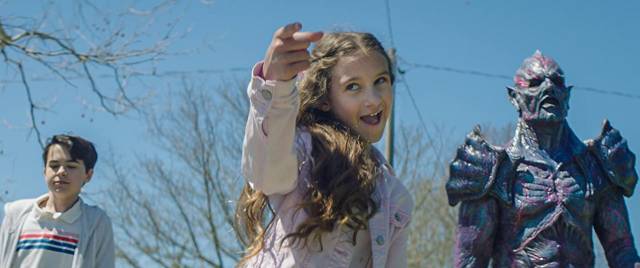
in Steven Kostanski’s Psycho Goreman (2020)
The Hunt (Craig Zobel, 2019) Members of the liberal elite kidnap right-wing deplorables and hunt them for sport; held back because of pre-release conservative attacks, this mocks the liberals at least as much as the conservatives who, given their narrative position, are more likely to engage audience sympathy. • Freaky (Christopher Landon, 2020) Landon consolidates the horror-comedy niche he’s carved out for himself, following the Happy Death Day movies with this funny and gruesome twist on Disney’s Freaky Friday; an ancient artifact switches the souls of a high school cheerleader and a serial killer and there’s only twenty-four hours for her to get her body back before the change becomes permanent. • Psycho Goreman (Steven Kostanski, 2020) Winnipegger Kostanski’s best film to date is a horror-comedy-fantasy in which an obnoxiously funny pre-adolescent girl gains power over the most powerful evil in the universe and plays him like a puppet.
Comments